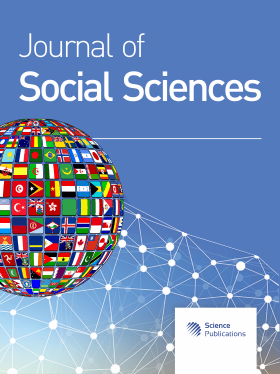Monks' Health: Holistic Health Care Model by Community Participation
Abstract
Problem statement: Monks’ health tended to be a continuous increased problem. They were groups who had limitations to access health services due to their monastic disciplines and their most importance for Buddhist institution. Without urgent solution, their normal way of life would have been affected. Approach: This research aimed to study current conditions and to develop monks’ holistic health care models by community participation in central region of Thailand. The study was a qualitative research conducted in 9 temples; 3 temples in urban area, 3 in semi-urban area and 3 in rural area. Samples were 224 persons; consisted of monks, public health officers from Department of Religious Affairs, local administrative organizations and people; selected by purposive sampling method. Observation form, survey form, interview form, focus group discussion and workshop were used as research tools while data was analyzed by descriptive research. Results: The result founded that in former time culture of monks’ health care was leaned on community, social, culture and tradition. People spoke in style of central Thai language and were in agricultural sector as well as had their belief in merit, sin and elder respect. Relation in communities was in form of generosity and living as similar as relatives. When some monk got sick, they would visit, take care and give foods and medicines. Most of medicines were household remedy and Thai herbal medicine that bought from drug stores in local market or grocery stores in village and monks were sent to hospital in case of severe illness. Temple was a part of community, so they had close relation. Nowadays people increasingly worked in manufactories that caused conflicts and alienations among them. Monks leaned on local markets for receiving foods offering and most of foods were cooked from flour, sugar, coconut milk and fat. These caused three-fourth of monks having chronic disease as diabetes, hypertension, high cholesterol and gout. They had behaviors on addicting to cigarette, coffee and energy drink. They had less exercise without annual health checkup. Their cells were non-hygienic with plenty of garbage, foods scrap and joss stick dust. They preferred to have medical care at private clinics than hospitals or public health centers due to long time waiting. There were some protections by local administrative organizations as pets’ vaccination and using Tempos sand granule for eliminating mosquito larva. Severe mental health problems were not found. Conclusion/Recommendations: Related agencies with monks’ holistic health care models by community participation in central region of Thailand were local administrative organizations, communities, government agencies, temples/clergies, provincial office of Buddhism and monks. Important activities were participative operations of all related sectors, monks’ annual health checkup 1-2 times a year, temples medicine cupboard, monk health care fund, pets’ vaccination, temple public health volunteer, monk exercise promotion, temple improvement with the 5-S activity and usage of temple as center for health care development.
DOI: https://doi.org/10.3844/jssp.2010.478.482

- 5,354 Views
- 4,946 Downloads
- 46 Citations
Download
Keywords
- Monks' health
- chronic disease
- non-hygienic
- community participation
- holistic health
